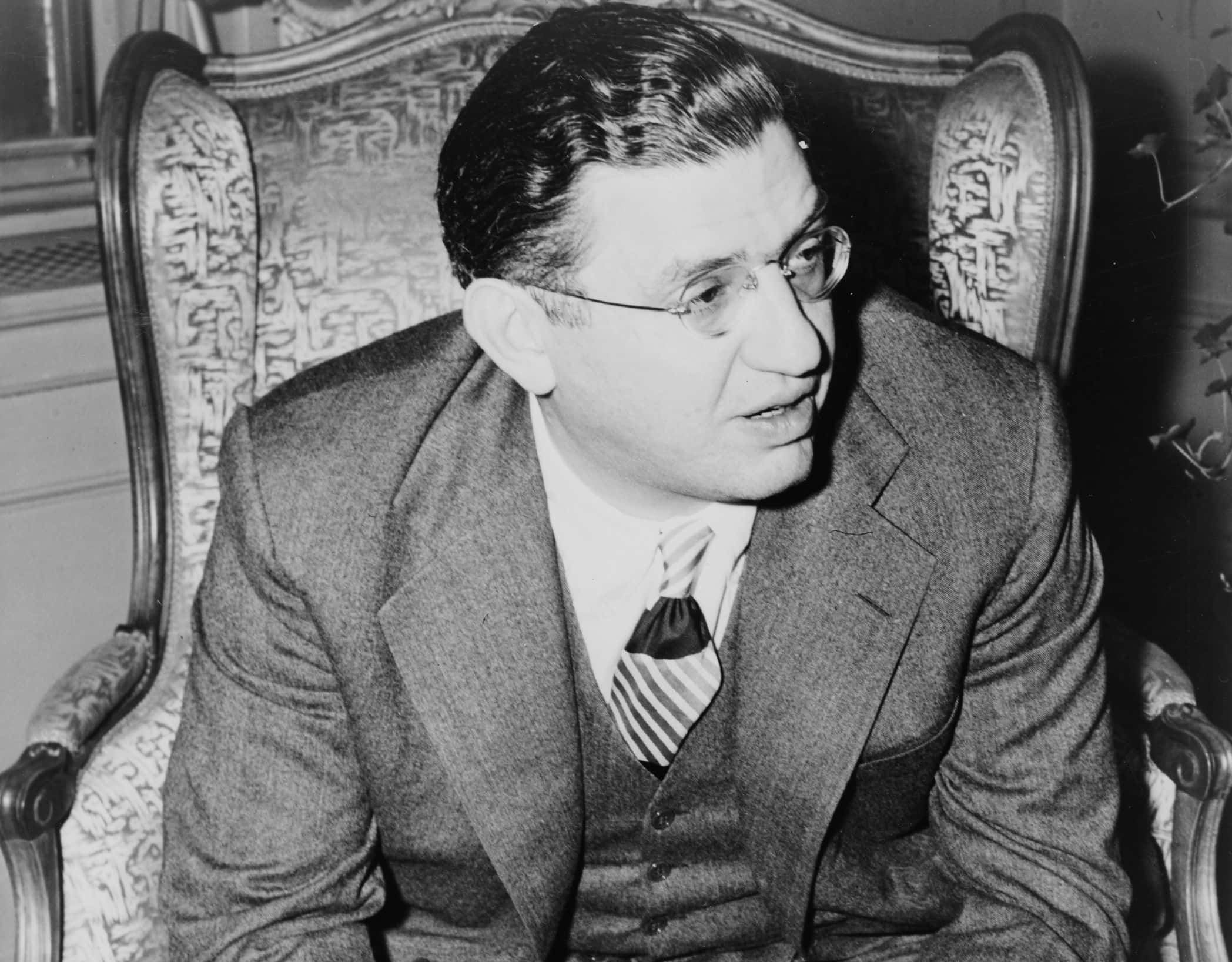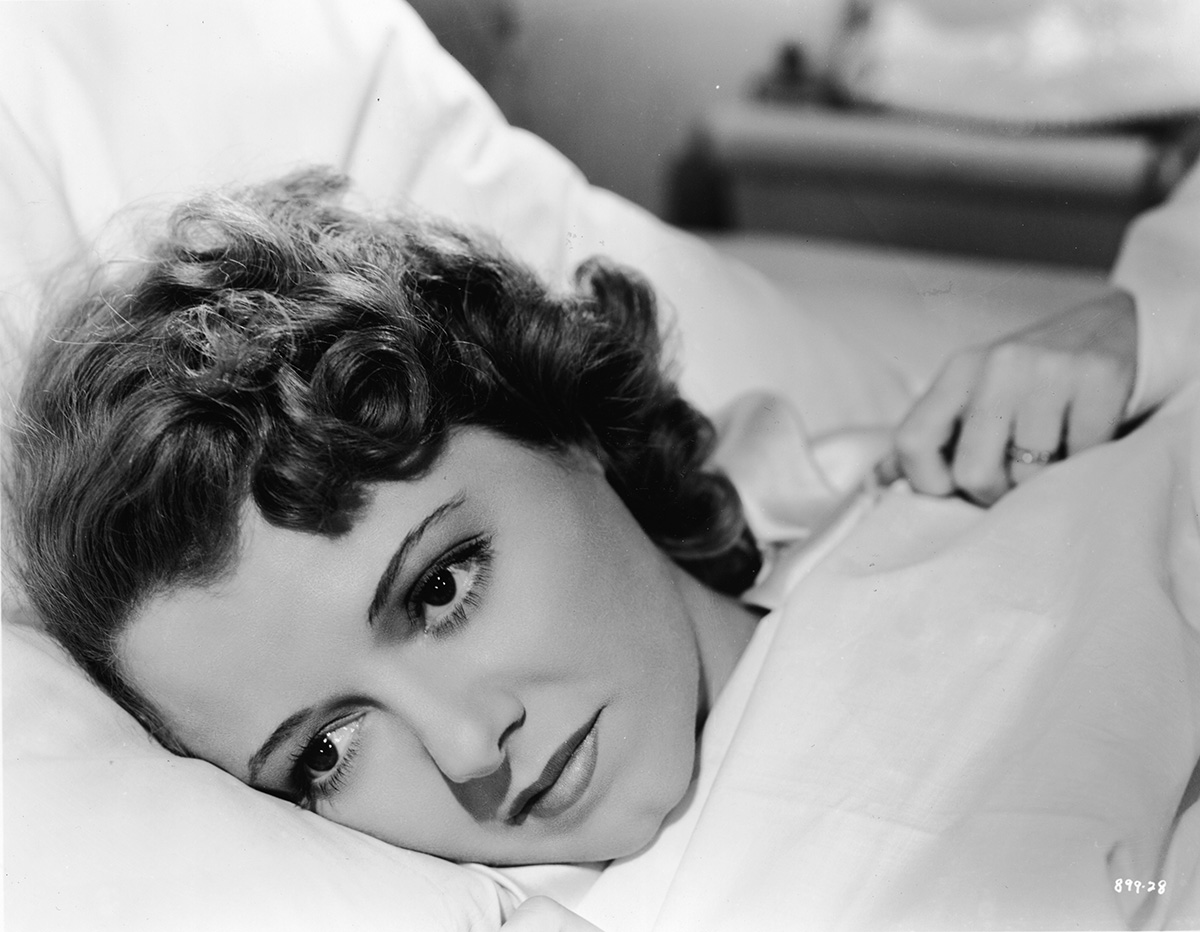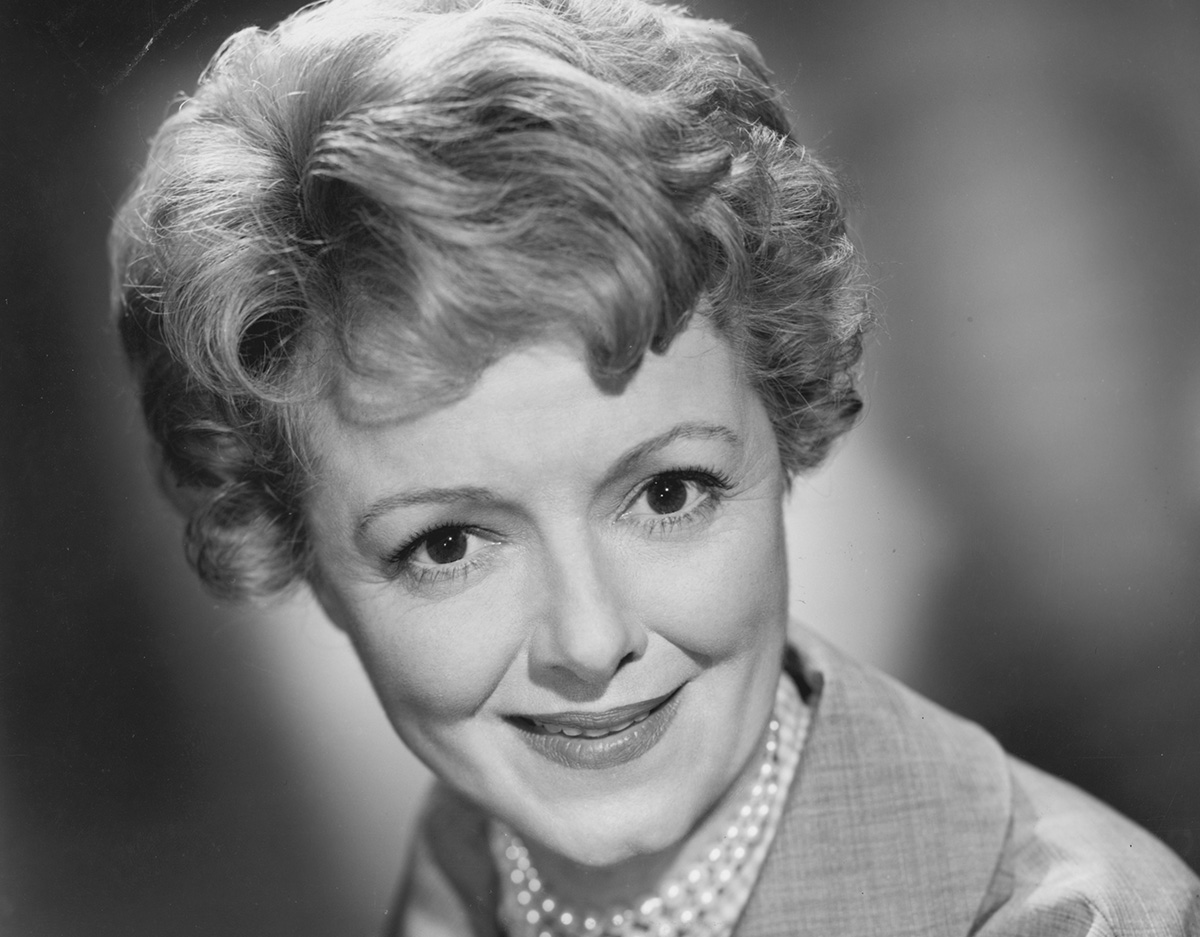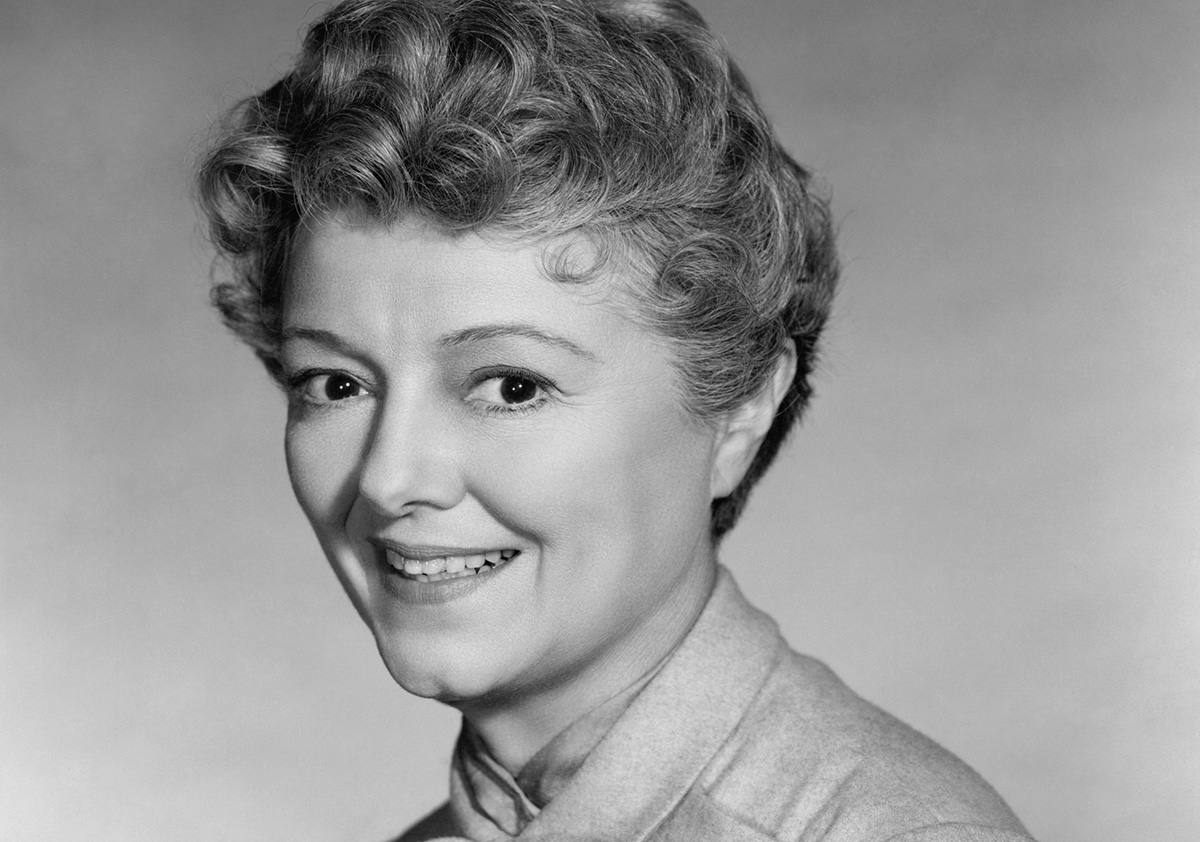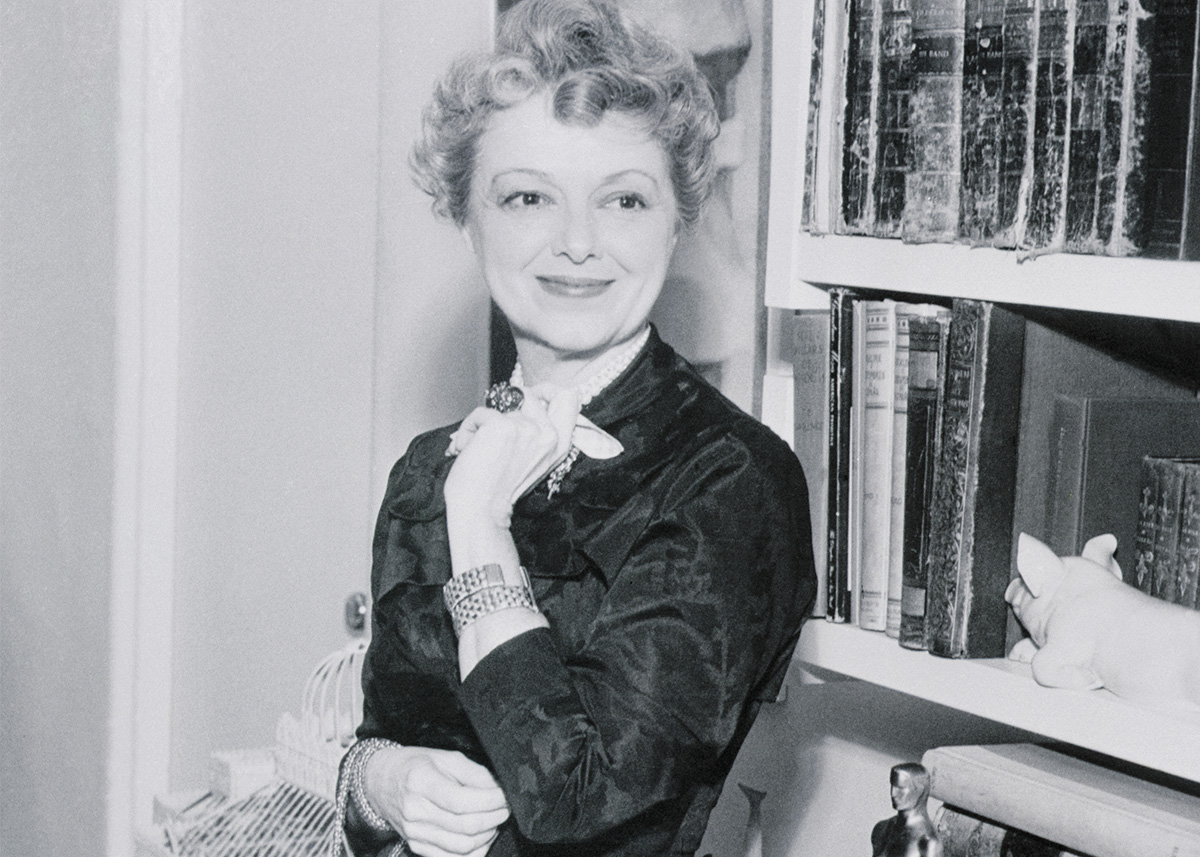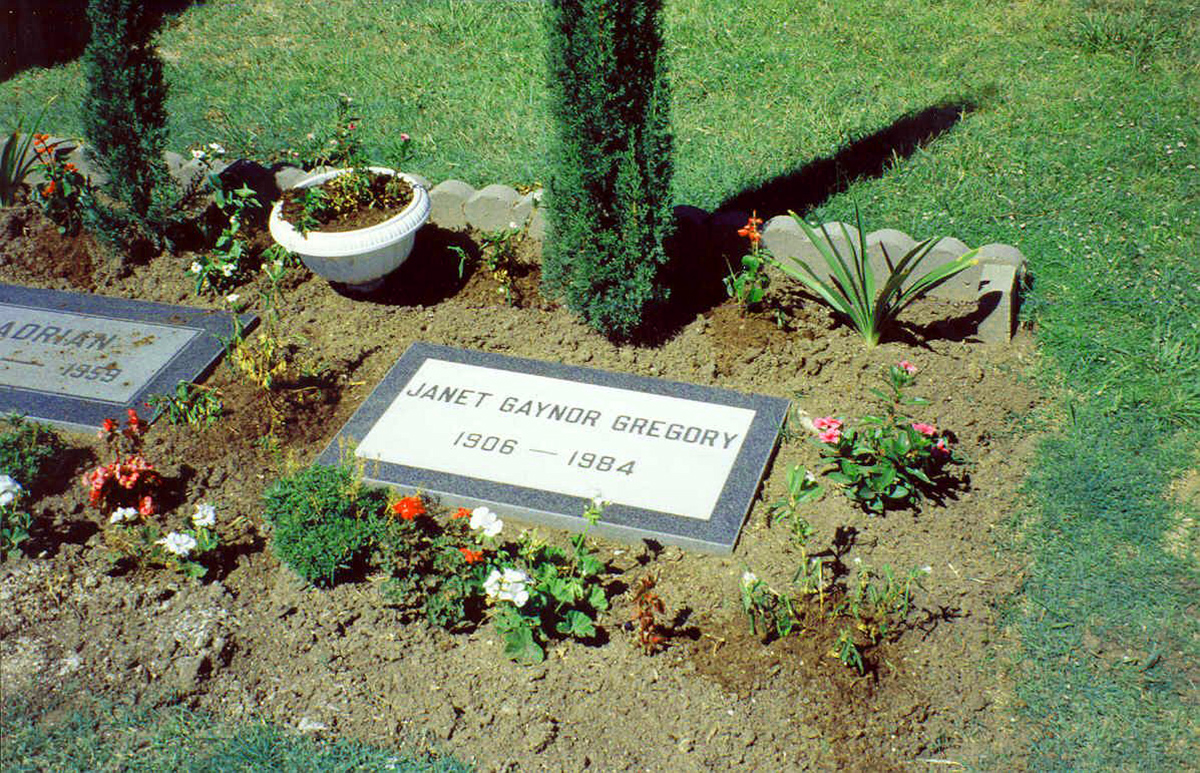Academy Award-winning actress Janet Gaynor was a survivor. She survived a rocky childhood and she survived the transition from the silent films to the talkies. She even survived a couple of fake marriages. And, she was the first to star in A Star Is Born and survived being compared to heavy hitters like Judy Garland, Barbra Streisand, and Lady Gaga who came after her. Sadly, it took just one fateful ride for her luck to turn against her. Let’s roll out the facts, and see this story from its humble beginning to its tragic end.
1. She Got Trained
Janet Gaynor had a different name when she was born on October 6, 1906, it was Laura Augusta Gainor. Her father worked in the theater as a painter and paperhanger while her mother was a stay-at-home mom. Dad must have loved the theater because as soon as Gaynor was old enough, he started to train her. He taught her how to sing, dance, and even do acrobatics. Gaynor took what dad had taught her and acted in school plays.
Gaynor’s life with her dad seems idyllic, but it wasn’t long before it came to an abrupt end.
2. It Was Over
The Gaynor family was living in Philadelphia and Janet was getting all kinds of theater training from her father—but all that was about to come to a brutal end. In 1914, Gaynor’s parents gave her the terrible news: they were getting a divorce. Gaynor’s mother packed up Gaynor and her sister and moved to Chicago. Her free acting lessons were a thing of the past—and then the world piled insult on top of injury.
3. Her Hopes Were Dashed
Not only was Janet Gaynor no longer getting theater lessons from her father, her mother decided to get remarried. Maybe Mrs. Gaynor had had it with theater people because her next husband didn’t have an artistic job at all: Harry C Jones was an electrician. It seemed that Gaynor’s hopes of being a performer were over—but then an unlikely glimmer of hope shone through.
4. He Believed In Her
Gaynor’s new father may have been an electrician, but he did think that Gaynor should get a chance at show business. After a few moves through the US, her mom and stepdad made a decision: they were moving the family to Los Angeles so Gaynor could give acting in films a try.
This was a lot of pressure to put on a young woman—now she had to deliver.
5. She Lacked Confidence
Gaynor’s family was giving her a big chance—but the pressure was far too much for her. Her parents had uprooted the family and moved to LA just so she could start a career as an actor. And what did Gaynor do? She enrolled in the Hollywood Secretarial School. Gaynor didn’t have much confidence in herself, so she thought being a secretary made more sense. She also sold shoes and worked as an usher in a theater.
Obviously, her parents weren’t impressed—so they came up with a plan.
6. She Was In The Background
Janet Gaynor may have given up on her acting career—but her stepdad hadn’t. He took Gaynor to the studios in search of a role. It took a while, but a day after Christmas in 1924, Gaynor got her first job. It was time to celebrate, but not too much: the role was as an unglorified extra. Still, she was going to be in a movie—who knows what would come of it?
7. She Became A Hot Commodity
Universal Pictures hired Gaynor as an extra and then put her on contract for $50 a week. Well, they were in for a big surprise. Fox Film Corporation took one look at her and offered her an even more lucrative offer—a screen test for an important part. They were looking for a supporting actress in their film The Johnstown Flood. Her screen test was a hit, and they cast her in the supporting role. She’d quickly gone from background talent to supporting actress.
From this, Gaynor got what she—and her stepdad—was looking for.
8. She Got Chosen
The Fox executives were so impressed with Gaynor’s performance in The Johnstown Flood, that they offered her a contract for five years. Fox was soon putting Gaynor in film after film. Before she’d even done a year of work, she got a call: she was going to be a WAMPAS Baby Star. What’s that you ask? WAMPAS stands for the Western Association of Motion Picture Advertisers. But what the heck is a baby star?
9. She Was A Baby
WAMPAS didn’t choose actual babies, they chose baby stars. To them, that meant the future female film stars that audiences could expect to be the leading ladies of tomorrow. Think of it as an early version of Vanity Fair's "Young Hollywood" issue. Sometimes they got it right: like with Fay Wray or Ginger Rogers. Sometimes the baby's career didn’t take off at all. In 1926, Gaynor was a WAMPAS baby—but she had some fierce competition.
Among her cohorts were Joan Crawford and Mary Astor. Could Gaynor compete with these acting legends?

History's most fascinating stories and darkest secrets, delivered to your inbox daily.
10. They Loved Her
Fox was paying Janet Gaynor to act, and they intended to cash in on her. In 1927 she made three movies: Two Girls Wanted, 7th Heaven, and Sunrise: A Song of Two Humans. Gaynor’s name was already appearing as the lead and audiences were loving her. But moviegoers wanted to show their love for their favorite celebrities in another way. Because of this, the Academy Awards was born.
11. She Took it Home
The first Academy Awards were wildly different than what we know today. They took place in a hotel, cost five bucks to enter, and lasted 15 minutes. The award for Best Actress went to Gaynor—but the circumstances were utterly bizarre. She won not for a single film, but because of her work in three movies that year. The Academy soon put a stop to this practice, but Gaynor broke three records that night.
She was the first to win the award, the first and last to win for more than one film, and—at 22 years of age—was the youngest recipient until 1986. Her reaction was, to say the least, a bit odd.
12. It Didn’t Mean Much
Remember, this was the first Academy Awards presentation. When it’s the first of something it’s hard to fathom what the award would come to mean in the future. Gaynor later said of the honor that she didn’t really understand what it meant, and she was more excited about meeting the awards’ host—Douglas Fairbanks—than winning some stupid statue. Still, Gaynor had that Oscar under her belt, so the world was her oyster.
Up until this point all her films had been silent. There was, however, something scary coming her way: the talkies.
13. She Made the Leap
The introduction of sound to motion pictures put the fear of god in some of the silent era film stars. It so happened that some silent stars didn’t have voices that matched the glamor of their faces. Gaynor made the jump to the talkies in a musical: Sunny Side Up. She made the film and then waited in agony to see what the critics and fans would say about her voice.
14. It Was Weak Praise
When Janet Gaynor opened The Times and The New York Times to see a review of her first talkie, she was likely shaking in her boots. Their review, after all, could make or break her career. The two newspapers agreed about Gaynor’s voice—but what they said was far from glowing.
They called it tolerable but not praiseworthy. Okay, this was probably not what Gaynor wanted to hear, but it also wasn’t a complete condemnation. Gaynor would live to make another film.
15. They Paired Nicely
Whether critics liked it or not, Sunny Side Up was a hit for Fox and ended up being the highest-grossing film of 1929. It was also the fourth time Gaynor had appeared in a film with dreamy co-star Charles Farrell. Moviegoers loved the pairing of these two wholesome actors, and the media dubbed them “America’s favorite love birds”.
Likely, the studio loved that they had a hot commodity on their hands, but was there anything real behind their on-screen chemistry?
16. They Weren’t Fake
Over the years, there have been a lot of fake Hollywood couples that were put together just to boost careers. When it came to Gaynor and Farrell, however, it was kind of the opposite story—they were hiding a scandalous secret. This manufactured glamorous couple was actually seeing each for real—and behind the studio executive’s backs. The way that they met up in secret soon became a Hollywood legend.
 Wikimedia Commons Charles Farrell
Wikimedia Commons Charles Farrell
17. They Needed Help
Gaynor used actor Douglas Fairbanks Jr to help her meet up with Farrell on the sly. Fairbanks remembers driving Gaynor and Farrell to a remote—and rather shabby—house near the beach. There he would leave “America’s favorite love birds” to do what love birds do. Fairbanks would go swimming or sailing and then go pick them up again. He called himself their beard.
But how long could these love birds keep up the deception before they got caught?
 Getty Images Douglas Fairbanks Jr.
Getty Images Douglas Fairbanks Jr.
18. It Was A Secret
Gaynor’s relationship—both on and off the screen—with Farrell continued to heat up. During the filming of Lucky Star in 1929, Farrell actually proposed and Gaynor accepted. Little changed, however, as the two kept their engagement a secret and carried on as they had before. And when it came time to make a plan to walk down the aisle, they were a little…neglectful.
 Getty Images Charles Farrell
Getty Images Charles Farrell
19. She Walked
Gaynor and Farrell were engaged but neither was making plans for a wedding—and then it all fell apart. Gaynor lost interest and set her sights on another man. Maybe she was through with show business types because she found herself in love with a lawyer. In September 1929—the same year that Farrell had proposed—she walked down the aisle with Jesse Lydell Peck.
It’s not clear how Farrell felt about this arrangement, but the two continued to make films together. Which may have been more than a little awkward.
20. She Battled For It
Janet Gaynor continued to make films with and without her ex-fiancé Farrell. By 1934, many considered her the top box office draw of Hollywood. Well, she did have some competition. Marie Dressier—who did mostly comedies—had her legions of fans that considered her to be the number one box office draw. The two performers were going at the position neck and neck—until something happened that declared a winner.
21. It Was Decided
Both Gaynor and Dressier had won Academy Awards for their acting, so it was hard to pick who was the biggest box office draw in Hollywood—until a sad tragedy ended the race prematurely. In 1934, when Dressler got cancer and died, it was painfully clear that Gaynor was in the number one spot. There was nothing stopping Gaynor now, she could almost name her own salary and get it. Or could she?
 Picryl Marie Dressler
Picryl Marie Dressler
22. There Was A Shuffle
In 1935, Gaynor made The Farmer Takes A Wife, which was the first film featuring the soon-to-be huge star, Henry Fonda. After this film, there was a huge shuffle in the Hollywood system. Two major studios merged to form 20th Century Fox. And what did this mean for Gaynor? Well, it had a dire effect on her career.
Young actors like Loretta Young and Shirley Temple were getting more publicity. It was time to sign a contract with the new studio—and Gaynor was in over her head.
 Picryl Henry Fonda
Picryl Henry Fonda
23. She Refused
20th Century-Fox was ready to sign a contract with Gaynor, but they offered her a paltry $1,000 per week. According to the press, Gaynor wasn’t happy about the offer, and she refused to sign. Gaynor’s popularity may have been declining, but she knew she still drew audiences to movie theaters—and put money in the studio’s pockets. Instead of making a huge scene, she came up with a plan.
24. She Was Stubborn
Janet Gaynor’s plot to get 20th Century Fox to pay her more was simple, yet ingenious. She simply waited them out. Because of her patience—and tenacity—Fox offered Gaynor three times what they had initially offered: $3,000 a week. The studio, in an effort to preserve Gaynor’s girl next door reputation, put it out to the media that no, it wasn’t money that Gaynor was out for.
Strangely, they didn’t offer another explanation for the contract stall. It didn’t matter, Gaynor had beat the studio. Now, however, she had to prove she was worth it.
25. They Competed For The Top
Gaynor’s first film with the newly merged 20th Century Fox was Ladies in Love. This was a film about four women, so you can imagine there was some competition as to whose name would appear at the top of the poster. Rising stars Constance Bennett and Loretta Young were two of the other contenders. In the end, Fox went with Gaynor for the top billing. Now it was up to the critics to decide if it was the right choice.
 Flickr, oneredsf1 Constance Bennett
Flickr, oneredsf1 Constance Bennett
26. It Wasn’t Great News
When the reviews came out, it wasn’t great news for Janet Gaynor. The Chicago Daily Tribune said that co-stars Loretta Young and Simone Simon rang true in their characters. About Gaynor, the reviewer noted that she rang true “at times”. This hurt Gaynor’s reputation, and so did the next announcement.
Gaynor had dropped from the number one spot in the box office appeal contest to a disappointing number 24.
 Wikipedia Loretta Young
Wikipedia Loretta Young
27. She Was Waning
Suddenly, Fox now had an advantage over Gaynor. Everyone knew she was now number 24 and not worth the salary they were paying her. Gaynor was sure that her waning popularity was the fault of the studio. They kept casting her in the good girl roles and audiences were looking for something different. Fox executives came to Gaynor with a change in her contract—one that wasn’t at all good for her.
28. She Got A Downgrade
The Fox executives wanted to downgrade Gaynor. Their idea was that now Gaynor was a “featured player” and not a lead. Gaynor had too much self-esteem—and popularity—to agree to that, so she made a shocking decision. She walked right off the lot.
Gaynor figured she’d had a good run and that early retirement might suit her just fine. Well, it didn’t quite work out that way.
29. It Was Too Similar
Janet Gaynor was friends with David O Selznick, who had started his own studio that was independent of the major studios. Selznick International Pictures had been sitting on a film for a while. Selznick was hesitant to make it because the story was similar to an existing film.
However, with Gaynor free from Fox, Selznick decided it was time to make the picture. And that is how A Star Is Born…was born.
30. She Stepped On It
Janet Gaynor went from forced retirement to land a lead role in a movie that was sure to be huge. This first version of A Star Is Born is about an aspiring actress who marries an actor whose career is on the decline. In this film, Gaynor’s character—Vickie Lester—has three run-ins with her real-life counterpart.
When Lester stops to look at the famous footprints of stars at Grauman’s Chinese Theater, she is actually looking at the star next to Gaynor’s own. In fact, you can see the “R” Gaynor in the shot.
31. She Brought Her Own
In A Star Is Born, there is a scene where Gaynor’s character receives an Academy Award. It seems as though the props department was a little lazy and didn’t want to make an Academy Award for the day’s filming. Gaynor was up for pitching in, and she offered to bring her Oscar from home, So in the film she’s actually holding her own Oscar.
There’s another Academy Award connection to Gaynor's real life, however, that wasn’t so amusing.
32. Art Imitated Her Real Life
In A Star Is Born, Gaynor’s character’s inebriated husband upstages her. While she’s accepting her Academy Award for Best Actress, her husband staggers onto the stage to ruin her special moment. Sadly, a real-life incident echoed this humiliating moment.
In 1929, Gaynor’s sister pretty much did the same thing to her. It must have felt a little too close for comfort for Gaynor. But most important, A Star Is Born was Gaynor’s first film away from a major studio—and getting good reviews was vital to her career.
33. It Was A Hit
A Star Is Born ended up being a huge hit, and it gave Gaynor's career a much-needed boost. The film also got Gaynor a nomination for Best Actress. She lost out, however, to Luise Rainer in The Good Earth. It was also the first film about Hollywood that was profitable. As successful as A Star Is Born was for Gaynor, it could have led to something much, much bigger.
34. She Was In A Time Warp
Back when Gaynor did her screen test for A Star is Born, she may have noticed something weird. The costume department had put her in a dress that made her look like a Southern belle. And the actors around her were wearing uniforms like they were fighting in a battle in the 1800s. This certainly wasn't the correct setting for A Star Is Born. What was going on?
35. She Missed Out
When doing screen tests for A Star Is Born, Producer Selznick was doing some serious multi-tasking. While doing the screen tests, he had another film on his mind. He had just paid a pretty penny for the rights to make Gone With The Wind and was looking to cast that as well. Apparently, he offered the role to Gaynor—who famously turned it down.
Of course, Vivian Leigh would go on to win the Academy Award for that film. Oh well. You win some, you lose some.
36. It Lost Money
Despite missing out on Gone With The Wind, Janet Gaynor used her popularity from A Star Is Born to make another movie. She starred in the 1938 comedy, The Young in Heart. This was another Selznick production and it did get good reviews. In dollars and cents, however, the film lost money for Selznick. Gaynor’s reaction was brutal.
Faced with another setback, she decided it was time for her to really retire this time. Of course, she said it was because she wanted to be a wife and mother. Let’s see how that goes.
37. She Found A Guy
Gaynor’s marriage to the lawyer fizzled in 1932—so there was a major piece missing from her big plan to be a wife and mother. However, there was a costume designer that she liked quite a bit who worked for MGM. His name was simply Adrian, and the two made their way to Yuma, Arizona for a quickie marriage. There was only one small problem with Adrian.
38. It Was Lavender
MGM’s costume designer Adrian was well-known in Hollywood, but it wasn’t just for his costume design. He was also gay. Gaynor was likely in on the deceit, which was then called a “lavender marriage”. Adrian was using Gaynor to hide the fact that he was gay. But what was Gaynor getting out of the deal? The answer to this is a big surprise.
39. She Had To Hide
Back in 1933, Gaynor had worked on a film called Paddy the Next Best Thing. In this film, she met Margaret Lindsay. Lindsay never married, and most people assumed she was gay. Gaynor and Lindsay were close for many years, and some thought that Gaynor’s marriage to Adrian was a smoke screen to hide the fact that Gaynor was in a relationship with Lindsay.
 Wikimedia Commons Margaret Lindsay
Wikimedia Commons Margaret Lindsay
40. It Was A Game
Yes, Gaynor’s husband was gay—but that didn’t stop him from performing his duties as a husband. In 1940, Gaynor had a child: Robin Gaynor—since dad didn’t seem to have a last name to contribute. While it does sound like Gaynor and Adrian were using each other, it wasn’t as harsh as that.
The two shared a devotion to each other and took their relationship very seriously. There may not have been much romance, but they were playing a Hollywood game. A game that occasionally got very dangerous.
41. She Was An Expert
Janet Gaynor seemed to be an expert at playing the Hollywood game of marrying for convenience. Her friend—or maybe girlfriend—Lindsay, however, wasn’t willing to take part. The two women eventually parted ways, and Lindsay found someone more attuned to her values: comedian Mary McCarty.
Sadly, Lindsay stopped getting offered roles once people figured out what she was. Gaynor, however, was still keeping up appearances.
 Getty Images Margaret Lindsay
Getty Images Margaret Lindsay
42. They Made A Foursome
With Lindsay out of the picture, Gaynor only had her husband to hang out with. Eventually, she and Adrian met a couple they could socialize with. They were Mary Martin and Richard Halliday. Martin was a successful actress and singer, and Halliday was a drama and movie critic. The foursome got along famously and traveled together extensively—and it all worked so well for a very special reason.
 Getty Images Mary Martin
Getty Images Mary Martin
43. It Was Convenient
It never appeared in the newspaper—but behind the scenes, rumors flew. People whispered that Martin’s marriage to Halliday was just as lavender as Gaynor’s was to Adrian. Whether Gaynor and Martin were a couple is anyone’s guess. You could even assume the same thing about Adrian and Halliday. What we do know is that the two couples created a friendship that not only kept Hollywood gossip silent but also was significant.
They even shared a house together for a short period of time in Brazil. It sounds like Gaynor had made a life that worked for her—but how long would it last?
 Getty Images Mary Martin
Getty Images Mary Martin
44. She Was All Alone
This carefree lifestyle continued until 1959. Adrian had a heart attack in 1952 and slowed down his lifestyle because of it. In 1958, he came out of retirement to do the costumes for the Broadway show Camelot. It was a fatal mistake.
While at work on the costumes, Adrian suffered another heart attack—and this time, he didn’t make it. He got a posthumous Tony for the costumes, but Gaynor was left a widow.
45. He Fit In
Well, Janet Gaynor wasn’t actually all alone. She still had her friends Martin and Halliday. But to make it a foursome again, Gaynor married her longtime friend, producer Paul Gregory in 1964. Luckily, Gregory fit in with Martin and Halliday, and the good times continued. Gaynor and Gregory even bought land together in Brazil, in addition to their home in Desert Hot Springs, California.
Gaynor was nearly 60 years old, she had good friends and a great lifestyle. She seemed to have moved on from her past life as a movie star. But, as it turns out, she hadn’t completely forgotten.
46. She Hit The Stage
In 1980, Gaynor came out of retirement. She decided to give Broadway a chance. It was the stage adaptation of the hit film—and very black comedy—Harold and Maude. Gaynor’s return to show business, at the age of 74 was a success…but only for her. Critics praised her performance in Harold and Maude, but hated the show. It closed after only 21 performances.
Gaynor wasn’t a quitter, she just needed to find her next thing.
47. She Sailed The TV Seas
Janet Gaynor had gone the high-brow route with Broadway and failed. She then turned her sights to more lowbrow fare: television. While The Love Boat was extremely popular, it wasn’t exactly an acting stretch for Gaynor. Sadly, this was the last screen role for Gaynor. In 1982, she toured with On Golden Pond and then finally called it quits for good.
She’d had a great career, and she had people she loved in her life. It was time to enjoy the golden years. Sadly, she never got to see them.
48. He Didn’t Stop
In September 1982, Gaynor was traveling in a taxicab in San Francisco with her husband, Martin and Martin’s agent, Ben Washer. At the same time, Robert Cato was driving a van and failed to stop at a red light. Cato’s van collided with the taxicab and crushed it against a tree. It was a particularly violent accident, and once the ambulances had taken everyone to the hospital, the gruesome details came out.
49. It Was A Mess
Martin’s agent was the only fatality of the accident, but the injuries of the other occupants of the cab were horrifying. Martin had broken both two ribs and his pelvis. Gregory had two broken legs. Of the three survivors, Gaynor was the worst off. The crash caused her to have 11 broken ribs, fractures in her pelvis and collarbone. She also had bladder and kidney injuries, and one of her lungs had a puncture wound. The driver of the van got a three-year sentence in prison for causing all this.
50. She Couldn’t Get Over It
Janet Gaynor spent four months in the hospital recovering from her many injuries. After two surgeries she was finally allowed to go home. Her problems, however, were far from over. Gaynor’s health was in serious decline and she returned to the hospital on a few occasions. On September 14, 1984, Gaynor died at the hospital in Palm Springs—but there was one final, heartbreaking aspect to her death.
Her doctor later confirmed that it was a result of the horrific car crash two years earlier.























